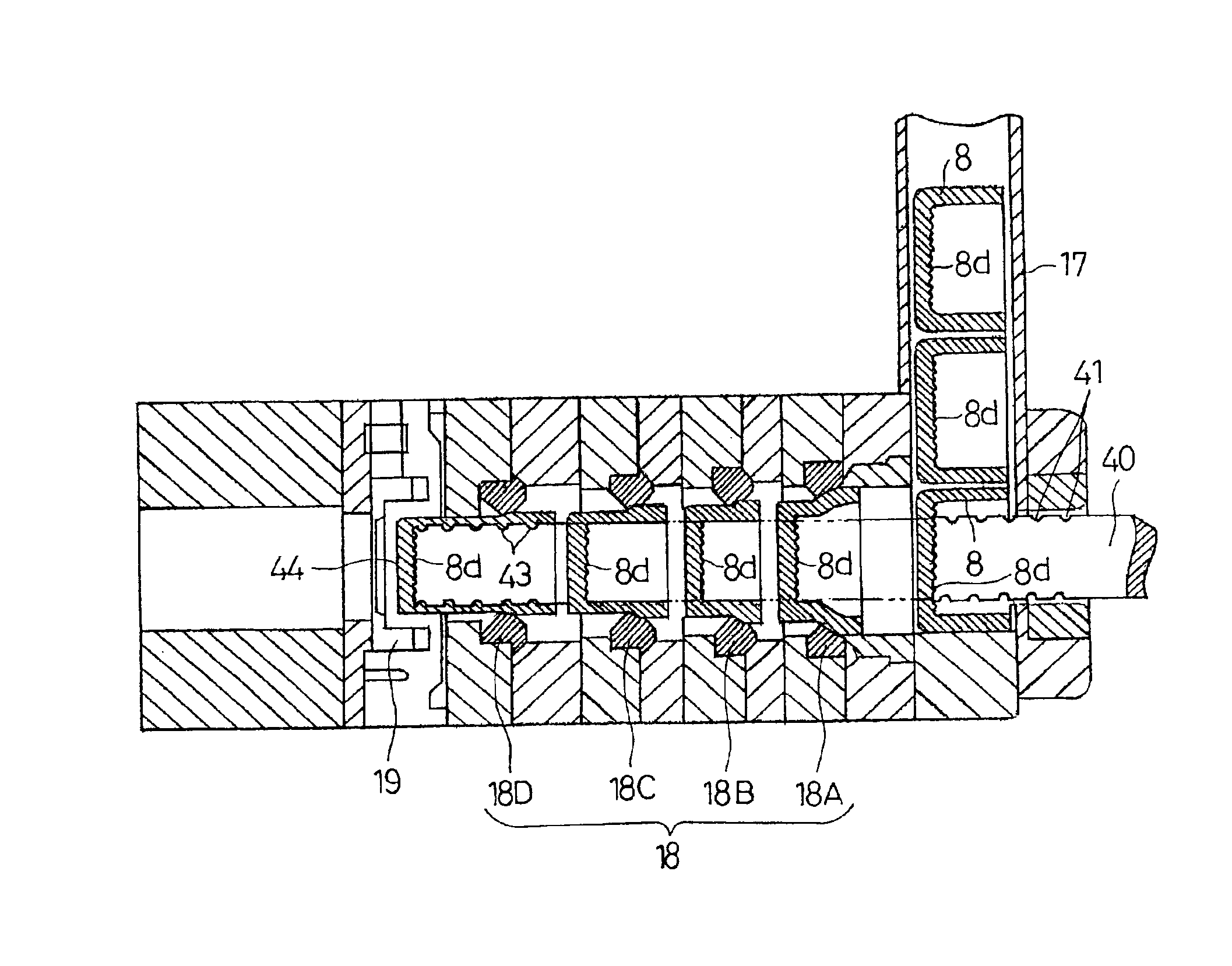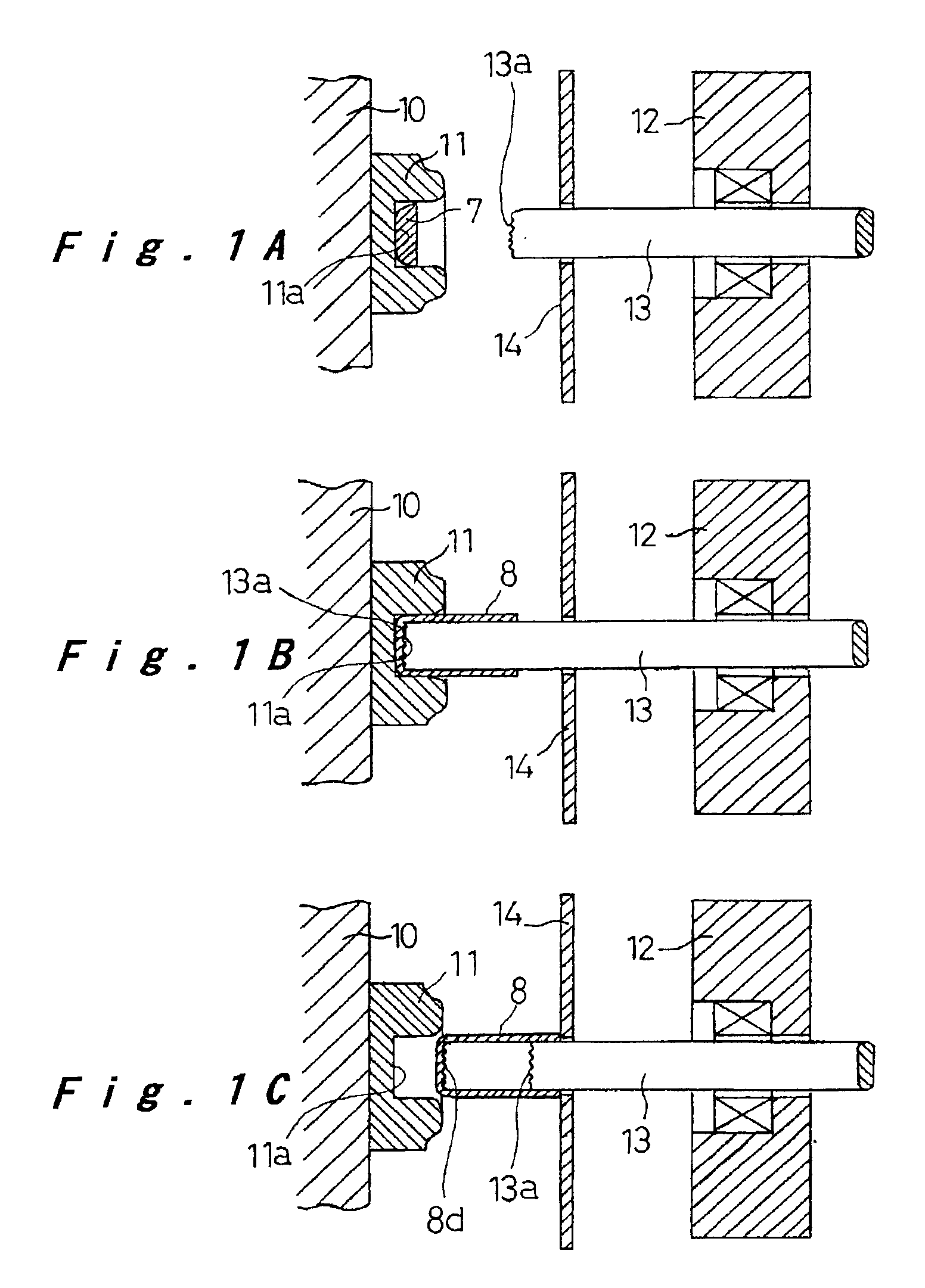However, in the manufacturing method of the prismatic battery case that uses the transfer drawing method, productivity is very low with only about twenty pieces per minute, for example, because the
deep drawing has to be repeated ten to twenty times. Furthermore, it has a drawback in that the cost rises, because the die for multistage drawing becomes complicated, in addition to there being many steps.
Thus, it needs to be made the same thickness as the side face, from the thick portion at the circumference of the bottom part, and the
deep drawing to fulfill this is very difficult.
What is worse, the prismatic battery cases made from these processes lack strength at the circumferences of the bottom part, and there is a problem in that it is not possible to maintain a prescribed pressure resisting strength when functioning as a battery.
However, the capacity to accommodate the power generation elements becomes smaller, because the thickness of the plate portions on the longer sides are made to be thick.
Since these portions have the largest surface area, it is not possible to pursue an improvement in energy density per volume or energy density per weight.
However, it is almost impossible to achieve a function that prevents expansion and deformation when the inner pressure of the battery rises, by using these vertical reinforcements of the battery case.
However, it cannot prevent the expansion and deformation of the thin plate portions on the longer sides, being reinforced only by the thickened corner portion.
Productivity is improved in comparison to the transfer drawing method, but the precision of the dimensions is very bad, and the strength at its side portions will be insufficient when it is made thin.
Consequently, there is a fear of the equipment being damaged by a leak of
electrolyte solution, or by a
short circuit of the power generation elements.
Thus, it is not possible to pursue an improvement in energy density per volume or energy density per weight, in this case.
However, in this manufacturing method, the number of steps are not reduced so much in comparison to the transfer drawing method, and troublesome operations intervene, such as the step that accurately positions the prismatic tube and the bottom plate, or the step that conducts the
laser beam
welding.
Accordingly, it is not possible to pursue an improvement in productivity.
Further, it is not possible to obtain a prismatic battery case that satisfies both of the contradicting requirements,
high energy density by reduced thickness and weight, and pressure resisting strength that prevents deformation during a rise in inner pressure within the battery, in this manufacturing method.
This makes the flow of material non-uniform, and thickness deviation, shearing, and cracks all caused by eccentricity are easily induced.
This also makes
processing difficult in correspondence to the concentration of stress, because the processing stress acting during the molding is not uniform, and molding with high precision also becomes difficult, because it is not possible to conduct a stable processing.
In particular, cracks and ruptures are liable to be induced at the plate portions on the shorter sides, which have small surface areas, and there arises a problem that portions with distorted shapes are generated.
Adjustment of the thickness at the bottom plate portion and the
peripheral side wall portion also becomes difficult, because the thickness at the bottom plate portion is adjusted to be a prescribed value by
impact molding in the last step.
It is not possible to obtain a prismatic battery case having a shape with each of the portions conforming to prescribed thicknesses, with high precision.
However, there are problems to be solved in this manufacturing method.
 Login to View More
Login to View More  Login to View More
Login to View More 


